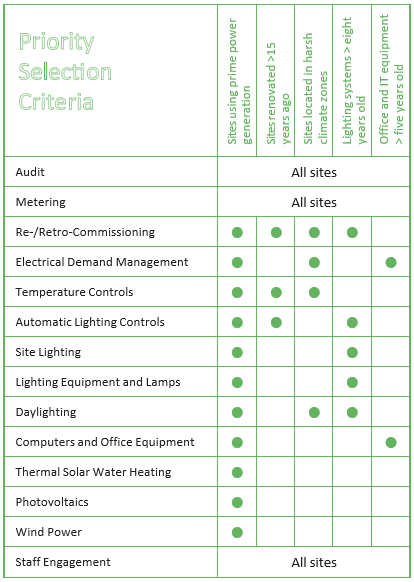Strategy Selection Factors
There are a number of no- and low-cost ECMs that can greatly reduce energy usage, energy costs, and carbon emissions.
Strategies identified in this chapter are especially important for sites with the following characteristics:
- Facilities using prime power generation: Posts that generate their own electricity on-site can increase security while reducing risk, fuel costs, GHG emissions, and maintenance needs most effectively through implementing load reduction strategies and incorporating renewables.
- Facilities renovated >15 years ago: Posts with aging HVAC systems or poorly insulated structures likely have opportunities for easy and no-cost ECMs, which can be identified during an energy audit.
- Facilities located in harsh climate zones: Missions that are located in hot and humid, hot and dry, cold and humid, or very cold climates likely have significant energy expenses (see Resources: American National Standards Institute (ANSI)/American Society of Heating, Refrigerating, and Air Conditioning Engineers (ASHRAE) 169-2006).
- Lighting systems > eight years old: Lighting systems have significantly progressed in recent years. An update to lighting controls or fixtures often provides payback within five to ten years.
- Office and information technology (IT) equipment > five years old: Older office equipment likely does not contain ENERGY STAR® labels or have stand-by or auto-off features, or uses outdated technology that is less efficient than new models.
The following table indicates which energy strategies can be most applicable for a mission, based upon the above criteria. Refer to each strategy section for implementation details.


